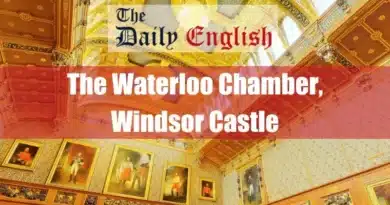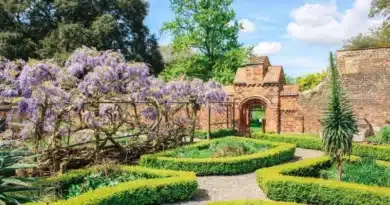Kingston upon Thames is a bustling town located in southwest London, England. Additionally, the town’s vibrant community celebrates its past while embracing modern innovations. This blog post will look at Kingston upon Thames history.
I. The Earliest Kingston Upon Thames History
A. Pre-Roman Times
The earliest evidence of human activity in Kingston upon Thames dates back to the Neolithic period, around 4000 BC. At this time, the area was covered in dense forests and home to hunter-gatherer communities. Archaeologists have discovered the remains of several burial mounds in the area, which suggests that these early inhabitants practised some form of ceremonial burial.
During the Bronze Age, which lasted from around 2500 BC to 800 BC, people cleared the forests in the area. As a result, agriculture became a more critical part of life. The first settlements began to appear along the River Thames as people started to take advantage of its fertile floodplains. Archaeologists have discovered the remains of several Bronze Age settlements in the area. Moreover, they found a group of roundhouses near Hampton Court Palace.
B. Roman Times
In 43 AD, the Romans arrived in Britain and quickly took control of Kingston upon Thames. The town’s strategic location on the Roman road from London to Chichester contributed to its significance as a trading post. Additionally, goods transported along this route often stopped at the town to rest and resupply. The Romans constructed a bridge across the River Thames at Kingston. This facilitated people to cross the river and transport goods to and from the town. Additionally, the bridge was vital in connecting Kingston to other parts of the country, allowing for increased trade and commerce.
Archaeologists discovered several Roman artefacts, including a hoard of coins in the River Thames, in 2006. The coins date from the 1st century AD and suggest that the area was an important trading centre.
C. Medieval Times
Kingston upon Thames declined after the Roman Empire collapsed. People largely abandoned the town, and it wasn’t until the 9th century that settlers began to resettle it. The Anglo-Saxon Chronicle first mentioned the town in 838 AD as Cyninges tun, meaning “the king’s estate.”
II. 10th Century Kingston Upon Thames History
In the 10th century, Kingston upon Thames was a thriving town with a bustling marketplace and a strong economy. The town’s location on the Thames River made it an important trade and commerce centre, and it was home to many skilled artisans and merchants.
A. Religious Center
During this time, Kingston was also an important religious centre. Several churches, including All Saints Church, dating back to the 9th century, and the Chapel of St. Mary, built in the 10th century, existed in the town.
B. Strategic Role
Kingston upon Thames played a vital role in the political and military events of the 10th century. The town played a strategic role in defending London, and military commanders often utilized it as a staging ground for their campaigns. It was also the site of several important royal councils, where monarchs would gather to make crucial decisions and issue decrees.
C. Viking Raiders
Kingston was not immune to the turmoil and upheaval of the times despite its importance. The town was frequently attacked and sacked by Viking raiders. Kingston suffered from the unrest and instability that plagued much of England during the 10th century.
Overall, Kingston upon Thames remained an important and prosperous town throughout the 10th century, laying the foundation for its continued growth and development in the centuries to come.
III. 11th Century Kingston Upon Thames History
In the 11th century, Kingston Upon Thames was a bustling market town in Surrey, England. It was an essential location for trade, as The confluence of two significant rivers housed the Thames and the Hogsmill. The town was also strategically located on the route between London and the south coast of England.
A. Royal Charter
During this time, King Alfred the Great granted Kingston a royal charter, which allowed it to hold regular markets and fairs. This helped to establish the town as a hub for commerce and attracted merchants from all over the region.
B. Coronation Center
In the late 10th century, Kingston played a significant role in the political landscape of England. It was the site of several important events, including the coronation of King Æthelstan in 925 and the signing of the Treaty of Kingston in 1040, which ended a long-standing conflict between the Danish king, Harthacnut, and the English king, Edward the Confessor.
C. Development
Kingston Upon Thames continued to flourish throughout the 11th century, with the construction of several important buildings and landmarks, including the All Saints Church, which still stands today. Despite being affected by the Norman Conquest in 1066, the town continued to thrive as a centre of trade and commerce, and it remains an important historical site to this day.
IV. 12th Century Kingston Upon Thames History
In the 12th century, Kingston Upon Thames was a bustling market town on the River Thames banks in Surrey, England. It was an important trading hub for the surrounding agricultural communities and a crucial crossing point for the river.
A. Royal Charter
The town was granted a royal charter in the early 12th century, which allowed it to hold weekly markets and annual fairs. Merchants and traders converged from the surrounding areas to vend their wares, including wool, leather, and grain. The town also had a thriving brewing industry and was known for its ale.
B. Castle Building
Kingston Upon Thames was strategically important during the medieval period due to its proximity to London and its location on the River Thames. The town was heavily fortified, and a castle was built in the 12th century to defend against possible attacks from rival factions. In the 14th century, people dismantled the castle, and today, only a few remnants remain.
C. Role In Politics of England
During the 12th century, the town also played a significant role in the politics of England. In 1215, the Barons of England met in Kingston to swear an oath of allegiance to the Magna Carta, a document that would later become a cornerstone of English law.
Overall, the 12th century was a time of growth and development for Kingston Upon Thames. Its importance as a trading hub and political centre increased in the following centuries.
V. 13th Century Kingston Upon Thames History
Kingston Upon Thames is a historic market town in southwest London, England. The Anglo-Saxons founded it in the 9th century, and one can trace its origins back to that time. However, it was in the 13th century that Kingston began to flourish as a town.
A. Famous Market
During this time, Kingston was an important market town and the main trading centre for the surrounding agricultural areas. In 1200, the town received a royal charter from King John, which allowed it to hold a weekly market and an annual fair. The charter also gave the town certain privileges and exemptions, such as exemptions from tolls and taxes.
B. Famous Transportation Hub
In the 13th century, Kingston also became a vital hub for transportation. The River Thames runs through the town, and Kingston was a central crossing point for those travelling from London to the south and west of England. The town had a busy port and was home to many boatmen and fishermen.
C. Development
The All Saints Church in Kingston was also a vital institution during this time. It was constructed in the twelfth century and expanded in the 13th century. The church was a centre of religious life in the town and played a crucial role in the community. It was also a trading place, as merchants often gathered in the churchyard to conduct business.
D. Important Events
In the late 13th century, Kingston was also the site of a significant event in English history. The forces of King Henry III fought against a rebel baronial army led by Simon de Montfort in the Battle of Lewes in 1264. Near Kingston, soldiers fought a battle and brought many wounded to the town for treatment.
Overall, the 13th century was a time of growth and prosperity for Kingston Upon Thames. The town’s market, port, and church were all thriving, and its strategic location made it an important centre of trade and transportation.
VI. 14th Century Kingston Upon Thames History
In the 14th century, Kingston upon Thames was a thriving market town with a bustling economy and a rich cultural heritage.
A. Trade
During the 14th century, Kingston upon Thames was known for its essential role in the wool trade. The town was home to many skilled weavers and wool merchants, and its location on the River Thames made it an important transportation hub for goods travelling to and from London.
B. Economic Significance
In addition to economic significance, Kingston upon Thames was also a centre of culture and learning. The town was home to several important religious institutions, including the Augustinian monastery of St. Mary, which was founded in the 12th century and was in operation until the Dissolution of the Monasteries in the 16th century.
C. Art and Literature
Kingston upon Thames was also a centre of art and literature during the 14th century. The town was home to several well-known poets and writers, including John Gower, a contemporary of Geoffrey Chaucer and best known for his works “Confessio Amantis” and “Vox Clamantis.” Gower lived in nearby Southwark, but he was a frequent visitor to Kingston upon Thames and was known to have spent time at the priory.
D. Culture
The town’s rich history and cultural heritage are still evident today. Explorers can tour the ruins of the Augustinian priory in the town centre and visit the Kingston Museum, which stores a collection of artefacts and documents about the town’s history.
Overall, the 14th century was a period of great prosperity and cultural richness for Kingston upon Thames, and the town’s legacy continues to be celebrated and preserved.
VII. 15th Century Kingston Upon Thames History
Kingston upon Thames began to develop into the thriving market town it is today during the 15th century.
A. Significance Due To Location
During the 15th century, Kingston upon Thames was an important commercial centre due to its location on the River Thames. The town was an important trading hub for wool, timber, and grain. Merchants from England and Europe would come to Kingston to trade their goods, making it a bustling and vibrant place.
B. Market House
In Kingston during the 15th century, people built the market house, completing it in 1540. This was one of the most significant events of the time. The market house was an impressive structure, and it became the focal point of the town’s commercial activity. It was a large, open building where traders could set up their stalls and sell their goods to the local people.
C. Charter of Town
Another notable event in Kingston’s 15th-century history was granting the town’s charter in 1208. The charter gave the town the right to hold markets, fairs, and other important events, which helped to establish Kingston as a thriving market town.
D. Religious Institutions
During the 15th century, Kingston was also home to several important religious institutions, including the parish church of All Saints. The church was constructed in the twelfth century and was extended and improved throughout the 15th century, making it one of the most impressive buildings in the town.
E. Politics
In addition to its commercial and religious significance, Kingston upon Thames was also an important political centre during the 15th century. The town was a major administrative centre for the county of Surrey, and the local court held sessions in Kingston’s guild hall.
Overall, the 15th century was a period of significant growth and development for Kingston upon Thames. The town’s commercial, religious, and political importance continued to increase, setting the stage for its future success as a thriving market town.
VIII. 16th Century Kingston Upon Thames History
Its history dates back to the Roman era, but it began to flourish in the 16th century.
A. Trade
Thanks to its strategic location on the River Thames, Kingston Upon Thames became an important centre for trade and commerce during the Tudor era. The town’s proximity to London made it an ideal stopping point for merchants and traders on their way to the capital, and it quickly grew into a bustling hub of activity.
B. Construction of Famous Bridge
One of the most significant events in Kingston Upon Thames during the 16th century was construction of the town’s famous bridge. In the 12th century, people built the original wooden bridge. However, by the 16th century, it needed urgent repairs. So, in 1538, they constructed a new stone bridge that transformed the town’s economy by making it easier for goods and people to cross the river.
C. Kingston Grammar School
Another significant development during the 16th century was the establishment of Kingston Grammar School. Founded in 1561, the school quickly gained a reputation for providing an excellent education, attracting students from all over the country.
D. Brewing Industry
Kingston Upon Thames was also a centre for the brewing industry, with several breweries in and around the town. One of the most famous was the Hogsmill Brewery, established in 1598 and remained in operation until the early 20th century.
E. Politics
In addition to its commercial activities, Kingston Upon Thames was also a place of political significance. In 1554, Queen Mary I held her court at the Guildhall in Kingston, and in 1603, James I stayed at the town’s Rose and Crown Inn on his way to London for his coronation.
Overall, the 16th century was a time of tremendous growth and prosperity for Kingston Upon Thames. The town’s location on the River Thames and its proximity to London made it an important centre for trade and commerce. At the same time, the establishment of Kingston Grammar School and other institutions ensured that it remained a place of learning and culture.
IX. 17th Century Kingston Upon Thames History
This text will focus on the 17th century when two crucial social, economic, and political developments transformed the town.
A. Growth
At the beginning of the 17th century, Kingston upon Thames was a small market town with around 1,500 people. It was known for its weekly market and annual fair, which attracted traders and merchants from all over the region. However, the town’s fortunes began to change with the growth of London, which was only 12 miles away.
B. Arrival of Quee Henrietta Maria
One of the most significant events in the town’s history was the arrival of Queen Henrietta Maria, the wife of King Charles I, in 1625. She established a royal court in Kingston upon Thames and brought a large entourage of nobles and courtiers. This brought great wealth and prestige to the town and a sense of sophistication and refinement.
C. Trade
During the 17th century, Kingston upon Thames also became an important centre for industry and commerce. The town’s location on the River Thames made it an ideal site for water-powered mills to grind flour, press oil, and make paper. This led to the growth of a thriving milling industry, which attracted many workers to the town.
D. Brewing and Pottery Industry
In addition to milling, Kingston upon Thames also became an important centre for leatherworking, brewing, and pottery. The town’s market and fair continued attracting traders and merchants from all over the region, and it became a vital hub for exchanging goods and services.
E. Politics
Politically, Kingston upon Thames was a Royalist stronghold during the English Civil War (1642-1651). The town was heavily fortified, and its residents fought fiercely in support of King Charles I against the forces of Parliament. The Parliamentarian army defeated the Royalist cause and forced Kingston upon Thames to surrender in 1648.
F. After Civil War
Despite this setback, Kingston upon Thames continued to thrive in the years following the Civil War. The town’s economy continued growing, becoming an important centre for education and culture. Kingston Grammar School, founded in 1561, became one of the most prestigious schools in the region, and the town’s theatre and music scene flourished.
In conclusion, the 17th century was a significant period of change and transformation for Kingston upon Thames. The town grew in size and importance, becoming an important industry, commerce, and culture centre. The arrival of Queen Henrietta Maria and the establishment of the royal court brought wealth and prestige to the town. Its strategic location on the River Thames ensured its continued success as a hub for trade and commerce.
X. 18th Century Kingston Upon Thames History
Kingston upon Thames experienced significant growth and development during the 18th century, becoming an important centre of commerce and industry.
A. Growth
One of the significant factors driving Kingston’s growth during this period was its strategic location on the River Thames. The town was an important transportation hub, with boats carrying goods up and down the river to and from London. Kingston’s location also became famous for travellers and tourists who enjoyed its scenic riverside views and historic architecture.
B. Trade
Another critical factor in Kingston’s development during the 18th century was the area’s industry growth. The town became home to several thriving businesses, including breweries, distilleries, and textile mills. These industries helped create jobs and bring wealth to the town, attracting more residents and businesses.
C. Politics
During the 18th century, Kingston also played an essential role in the political and social life of the region. The town was the site of several important events, including the coronation of King George III in 1761. Kingston was also home to several prominent political figures, including John Wilkes, a radical politician and journalist twice elected as the town’s Member of Parliament.
D. Culture
Kingston was significant for its cultural and social activity in the 18th century, as well as its commercial and political significance. The town was home to several theatres, including the Rose and Crown Theatre, which hosted performances by some of the era’s most famous actors and actresses. Kingston was also known for its lively social scene, with numerous taverns, coffeehouses, and clubs where residents could gather to discuss politics, trade gossip, and enjoy music and entertainment.
E. Challenges
Despite its many successes, Kingston was not without its challenges during the 18th century. The town suffered from periodic disease outbreaks, including smallpox and cholera, which caused significant suffering and loss of life. The town was also vulnerable to flooding, as the River Thames frequently overflowed its banks and caused damage to homes and businesses along the waterfront.
Overall, however, the 18th century was a period of growth and prosperity for Kingston upon Thames. The town’s strategic location, thriving industries, and vibrant cultural scene helped to make it one of the most critical and dynamic communities in southwest London.
XI. 19th Century Kingston Upon Thames History
In the 19th century, the town was a thriving centre for commerce and trade, with a bustling market and numerous shops and businesses. The town also had a rich cultural and social life, with various events and activities throughout the year.
A. Development
One of the most significant developments in Kingston’s history during the 19th century was the arrival of the railway. The London and South Western Railway opened a station in the town in 1838, which significantly improved transportation links and facilitated the growth of the town’s economy. The railway also brought a new wave of visitors to the town, including day-trippers and holidaymakers attracted by the town’s scenic location and pleasant surroundings.
B. Retail Sector
Another significant development in Kingston’s history during this period was the expansion of its retail sector. The town’s market, which had existed since medieval times, continued to thrive, and many new shops and businesses opened up in the town centre. The arrival of large department stores, such as Bentalls, in the early 20th century further boosted the town’s commercial success.
C. Bridge of Kingston
Kingston remained a relatively small town throughout the 19th century despite its growing prosperity, with around 7,000 people in 1801, increasing to just over 20,000 by 1901. Many people constructed new buildings and public amenities during this period, significantly changing the town. The town rebuilt the Kingston Bridge in 1825 and opened its first gas works in 1834. The town also benefited from constructing several new public buildings, including the Kingston Public Library, which opened in 1893.
D. Culture
Kingston’s cultural and social life was also vibrant during the 19th century, with various events and activities occurring yearly. The town had several theatres, music halls, sporting clubs and societies. The Kingston Regatta, held since the 1830s, was a popular event, attracting large crowds to watch the rowing races on the River Thames.
In conclusion, the 19th century was a period of significant change and development for Kingston upon Thames. The railway’s arrival and the town’s expansion of its retail sector helped boost its economy. At the same time, the construction of new public amenities and buildings improved the quality of life for its residents. Kingston’s cultural and social life also thrived during this period, with various events and activities attracting visitors from far and wide.
XII. 20th Century Kingston Upon Thames History
The 20th century saw significant changes and developments that shaped the town into what it is today.
A. Development
At the beginning of the 20th century, Kingston was still a relatively small town with a population of around 30,000. However, it was overgrown, and the expansion of the railway network made it increasingly accessible to people from London.
B. World War I
During World War I, Kingston played an essential role as a hub for the military. The town became a significant centre for munitions production, with factories and workshops set up to manufacture weapons and ammunition. The Kingston Upon Thames War Memorial, located in the town centre, was built to honour those who lost their lives during the war.
C. Development After War
After the war, the town expanded with new housing developments and infrastructure projects. The construction of the Kingston Bypass in the 1920s, which linked the town to London, helped boost economic growth and attract new businesses.
D. World War II
During World War II, Kingston was once again a target for bombing raids due to its strategic importance. The town authorities built several air-raid shelters to protect residents from the bombing. At the same time, the Kingston Fire Brigade played a vital role in extinguishing fires and rescuing people from damaged buildings.
E. Development after War
In the post-war period, Kingston underwent significant redevelopment, with many old buildings and streets replaced by modern developments. The Bentalls shopping centre, which opened in 1990, transformed the town centre and became a major retail destination.
Kingston continued to grow and develop throughout the latter half of the 20th century. The town became a popular destination for tourists and shoppers, with its riverside location and historic buildings attracting visitors worldwide.
XIII. Kingston Upon Thames in the 21st and 22nd Centuries
It has continued to grow and develop through the 21st and 22nd centuries.
A. Growth and Development
In the early 21st century, Kingston upon Thames experienced significant growth and development. The town underwent a major redevelopment project, which saw the creation of new retail and leisure spaces and new residential developments. This project aimed to enhance the town’s appeal to residents and visitors alike, and it succeeded in doing so, making Kingston upon Thames a thriving and vibrant place to live and visit.
B. Innovation
As the 21st century progressed, Kingston upon Thames continued to evolve, embracing new technologies and innovations. The town became a hub for tech startups, with many new companies setting up shops in the area. This influx of new businesses brought jobs and opportunities to the town, and it helped to boost its economy further.
C. Culture Development
In addition to its economic growth, Kingston upon Thames also saw significant cultural development in the 21st century. The town hosted several major cultural events, including music festivals, art exhibitions, and theatrical performances. These events helped foster a sense of community within the town and drew visitors from across the country and worldwide.
D. Today’s Kingston Upon Thames
Moving into the 22nd century, Kingston upon Thames continued to thrive and evolve. The town became even more connected by implementing new transportation infrastructure and expanding high-speed internet and telecommunications. This connectivity helped attract even more businesses to the area and new residents seeking a modern and connected lifestyle.
In the latter part of the 22nd century, Kingston upon Thames faced several challenges related to climate change. The town experienced more frequent flooding due to rising sea levels and had to contend with increasingly severe weather events. However, the town responded by investing in sustainable infrastructure and adopting eco-friendly policies, which helped mitigate these challenges’ impact.
Despite these challenges, Kingston upon Thames was a thriving and dynamic town well into the 22nd century. Its rich history, cultural heritage, modern amenities and innovations made it a unique and special place to live and visit.
XIV. Conclusion
The history of Kingston upon Thames is a fascinating tale of a town that has undergone significant changes over the centuries. Throughout its history, this place has evolved from a site of religious devotion and economic exchange in ancient times to a bustling hub of trade and governance under royal patronage. Kingston upon Thames has played an essential role in the history of England. Its strategic location on the banks of the Thames has made it a hub for transport and industry, while its historic buildings and cultural attractions continue to draw visitors from around the world. The town’s history endures, reflecting its people’s resilience and ingenuity amidst change.
XV. Answers to 10 FAQs about Kingston Upon Thames History
1. What is the history of Kingston Upon Thames?
Kingston Upon Thames is a historic market town located in southwest London. It has a rich history dating back to the Anglo-Saxon period and has been a site of continuous settlement since then.
2. Who founded Kingston Upon Thames?
Any particular individual did not find Kingston Upon Thames. It grew naturally around a crossing point on the River Thames, making it an important trade and commerce place.
3. What was Kingston Upon Thames like in the Middle Ages?
Kingston Upon Thames was a thriving market town during the Middle Ages with a busy port on the River Thames. It was also an important religious centre, with several churches and monasteries.
4. What was the significance of Kingston Upon Thames in Tudor times?
In Tudor times, Kingston Upon Thames was a substantial royal residence with several kings and queens. It was also a centre of industry, with many clothiers and brewers operating in the area.
5. What happened in Kingston Upon Thames during the English Civil War?
In the English Civil War, Kingston Upon Thames held strategic importance as it lay between London and the royalist stronghold of Oxford. During the war, different factions took control of the town several times, fighting several skirmishes and battles in the area.
6. What was Kingston Upon Thames like in the Victorian era?
Kingston Upon Thames grew and developed as a prosperous market town in the Victorian era. Railway arrival in 1863 improved travel, and new buildings rose in the town centre.
7. What was the impact of World War I on Kingston Upon Thames?
During World War I, Kingston Upon Thames played an essential role as a base for military training and recruitment. Many local men joined the armed forces, and the town received many refugees from Belgium.
8. What was the impact of World War II on Kingston Upon Thames?
German planes heavily bombed Kingston Upon Thames during World War II, destroying or damaging many buildings in the town. Despite this, the town quickly recovered after the war, and people constructed many new buildings post-war.
9. What are some of the most important historical landmarks in Kingston Upon Thames?
Some of the most important historical landmarks in Kingston Upon Thames include Kingston Bridge, All Saints Church, the Guildhall, and the Ancient Market Place.
10. What is the legacy of Kingston Upon Thames in modern times?
Today, Kingston Upon Thames is a vibrant and bustling town with a rich history and cultural heritage. It remains an important centre for commerce and industry and a popular destination for tourists and visitors.










Comments are closed.